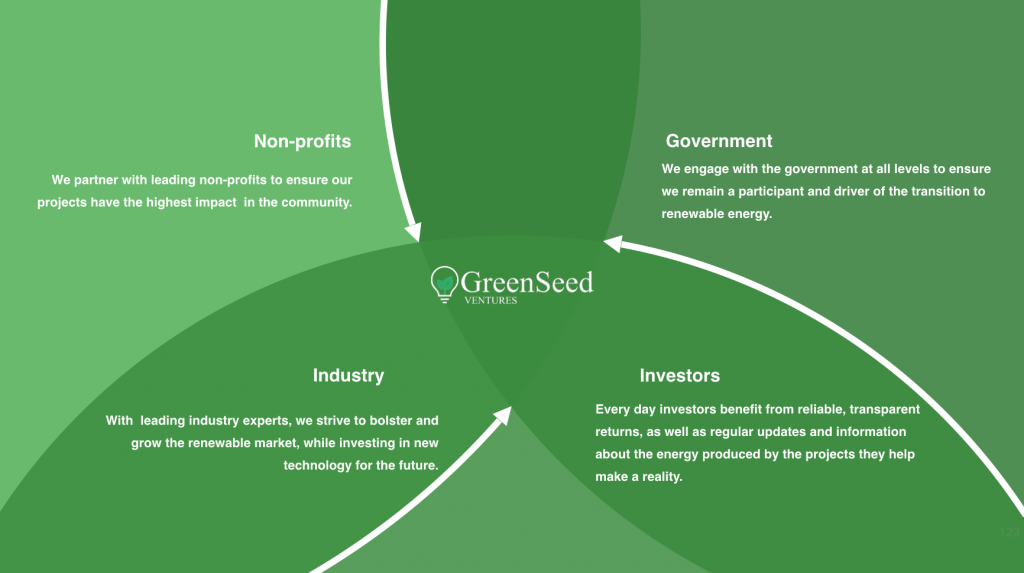Who We Are
We are a collective of scientists, engineers, strategists, and non-profit organizers brought together by our mutual drive to build a future built on renewable energy. Since 1920, over 30 billion tons of CO2 has been added to the atmosphere due to human activity, raising atmospheric CO2 concentrations from 280 parts per million to 400 parts per million. Understanding the need for a cleaner model of national energy production, GreenSeed is both an investment opportunity and a sustainable solution to our ever-growing energy needs. Through crowdfunding and traditional financing, GreenSeed will allow anyone to own a piece of the renewable energy projects that we will identify, source, construct, and operate.
Mission & vision
GreenSeed is committed to becoming a leader in regenerative sustainability and renewable energy technologies. With a focus on equitable access to investment opportunities through grassroots organization, we will empower everyone to bring clean, renewable energy to their communities. We will also maintain the highest standards of accessibility, diversity, and transparency so that all investors can connect with and learn from the projects they support - all while contributing to a larger model for a renewable future.
US Energy At a Glance
In 2019, the average cost of electricity in the US was 13 cents per kWh. With recent advances in technology, even small-scale investments in renewables are now financially competitive with traditional sources of energy.
Energy demand in the US is not evenly distributed, depending on differences in climate, population, and industry. In 2018, 4 states accounted for 27% of energy production in the US – Texas, California, Pennsylvania, and Florida.
Fossil fuels such as coal, natural gas, and petroleum still account for as much as 95% of all energy production in some states. In 2018, the US consumed 636 million short tons of coal, 10.8 billion Mcf of natural gas, and 46.7 million barrels of petroleum for energy production.
When it comes to energy, there is no one size fits all solution. Some states already rely heavily on renewable energy production, such as Idaho and Vermont where the majority of energy is produced by hydroelectric dams. While few states have access to the waterways, strong sunlight, and steady wind, most could better better capitalize on resources they do have available.
In 2015, a paper published with the Royal Society of Chemistry laid out a road map for each state to achieve 100% renewable energy production by 2050. Depending on resource availability and other factors, solar is projected to contribute between 6% and 90% of all production in such a world.
As technology has improved, the cost of solar has dropped dramatically. Today, residential solar can be installed for less than $2 per W in most states. While California and Nevada currently lead in solar production, solar energy is financially competitive in almost every state. The residential solar market alone is forecasted to double from 2M homes today to 4M homes by 2023.
You are a Critical Part of Our Team



